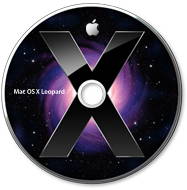Treating Leopard's Finder not-fully-loading bug


As noted in discussion boards and now in an Apple technical note — Mac OS X 10.5: Finder may not fully "load" — the Finder may not respond or you may only see the menubar with the Apple and Spotlight icons. It's so bad that the Force Quit Window may not come up.
Since you can't open the Applications folder or even connect to the GUI to perform most commands, what can you do?
While much of the Finder didn't load, it seems that Spotlight still works, so you click on the Spotlight icon and search for the Terminal application. Then you can open Terminal in the Spotlight window. This lets you use the rm (remove) Unix command to kill a file named "Divxnetworks.prev" in the Library/Application Support folder.
As it does for many of these fixes, Apple ignores folks who like stay away from the command line. Here's what you can do:
Restart your Mac and then hold down the Shift key during boot time, which puts the machine into "Safe Mode." This temporarily disables login items and "non-essential" kernel extension files, allowing you to use the Finder — which should have loaded fully this time — to find and remove (or relocate) the problem file.
Or you can boot from your Leopard DVD. Holding down the C key after the restart (with the disc in the drive) will force the Mac to boot from the optical drive.
The problem file is codec for DivX, a digital video format popular on Windows. The company offers a Mac player and codec.
A side note: Many Mac users are unaware of the many keyboard shortcuts built into the OS about quitting and restarting.
Holding down the Control and Eject keys will bring up the Restart/Sleep/Shutdown dialog box. I find that so does holding down the Power key on my Mac Book Pro, although this isn't listed in the great list of Mac OS X keyboard shortcuts (perhaps it's obvious).
Pressing the combination of Control, Command and Eject will automatically Quit all applications and then restart.